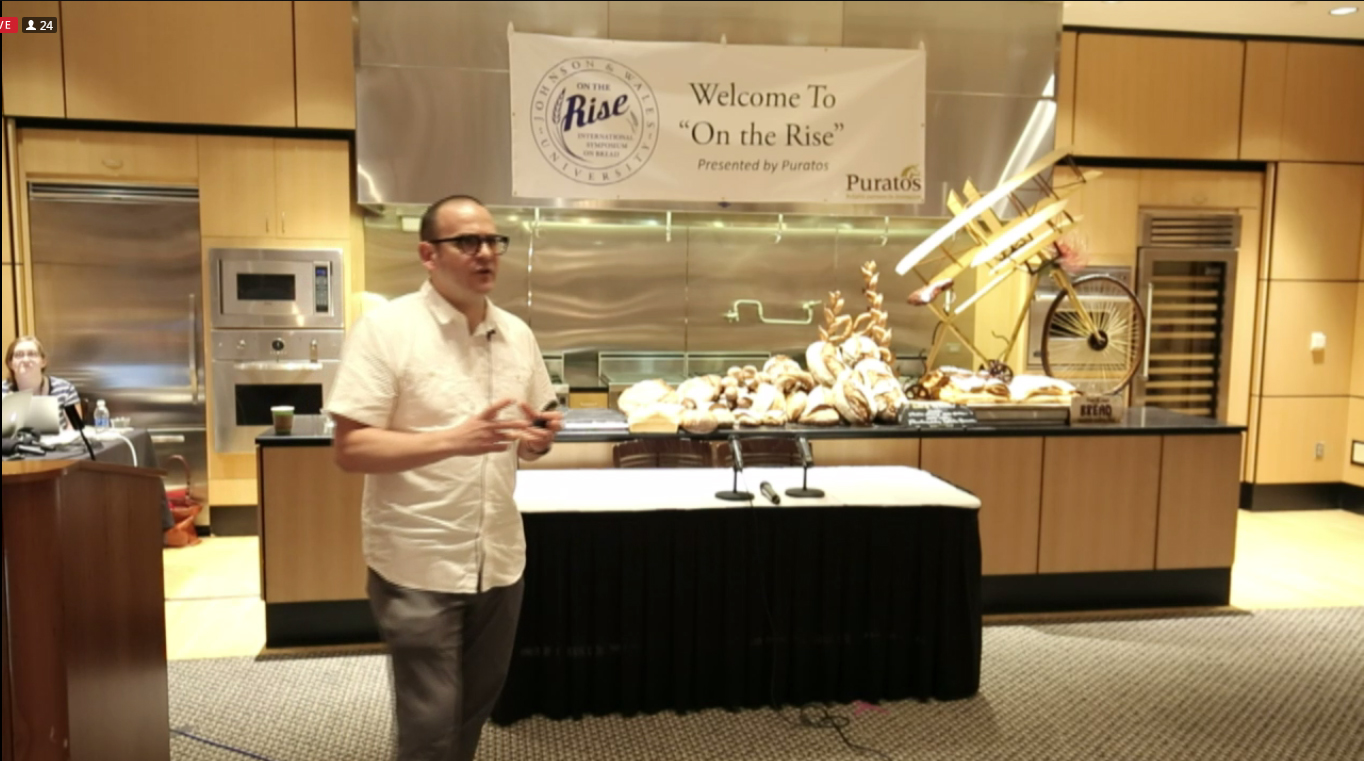The theme of the Bread Symposium at JWU Charlotte was ‘The future of bread.’ I’d like to share a few key takeaways that I gleaned from the 10 amazing speakers who presented.
JWU CHARLOTTE CHEF ON ASSIGNMENT PETER REINHART
What are the next big trends in bread, both small- and large-scale? Last month, JWU Charlotte’s first annual International Bread Symposium brought some of the bread world’s best and brightest together to wrestle with what might be next in bread, as well as share ideas. In this blog post, Symposium organizer Peter Reinhart sums up his takeaways from an amazing two days:
The theme of the Bread Symposium at JWU Charlotte was “The future of bread.” I’d like to share a few key takeaways that I gleaned from the 10 amazing speakers who presented. While each presentation was a highlight in itself and the fellowship energy of 200 passionate bread-heads gathered in one place is impossible to convey in words, there were 3 ideas that emerged that popped for me. Here are my top 3 takeaways:
- First, bread is back (it actually never went away). For example, Tom Gumpel, head of bread innovation at Panera Breads, announced that they will soon be rolling out a whole new generation of better tasting and better-for-you breads featuring whole grains, sprouted grains, natural leavening, and improved texture and flavor.
And Stefan Cappelle, who came in all the way from Belgium to deliver the keynote address, emphasized that the future of bread is found in its past, which is why his company, Puratos, has established a sourdough library where they keep alive 90+ sourdough starters from around the world and study their microbiology.
- Remember this phrase: “Just-in-time milling.” Both Wolfgang Mock, the godfather of the home-milling movement, and Tartine’s Chad Robertson, the reigning poster boy and visionary of the artisan bread movement, spoke about the importance of eating bread made with “just-milled” flour. Chad’s new bakery, Tartine Manufactory in San Francisco (and soon also in LA), mills the flour right there, in front of the customers, before mixing the dough.
Wolfgang’s new Mockmill, which can attach to any home mixer such as a Kitchen Aid, will stone grind flour from any grain as you need it. He prepared a delicious just-milled oat berry cereal called muesli for symposium attendees and told us he’s been eating it every day for years — he attributes his robust health and energy (he’s roughly 70 years old but seems more like a 30-year old) to this day-starter cereal. “When grain is milled fresh, you can eat it raw, uncooked!” he told us. So, whether raw or baked in bread, we’re going to be hearing a lot more about the benefits of freshly-milled flour.
- My candidate for the word of the year: poly-crop. Glenn Roberts, the brilliant founder of Anson Mills, spoke of the “perfect acre” in which a number of grasses (like wheat and rye and oats) and other compatible plants, grow together and are harvested in vertical layers as they ripen. The result: healthy soil, no need for crop rotation or chemical fertilizers, and the best tasting versions of these plants that nature can produce.
This is not a new idea — I remember reading about it back in the 1960s and thinking it would change the world. Well, ideas sometimes take time and sometimes they go dormant and then crop up again when their time has come. Good ideas don’t die, they just need time and good soil to germinate. Poly-crop is back!
Sign up for news about next year’s Symposium by sending an email to Symposium@jwu.edu.

Francisco Migoya
“Think of yeast as a pet —you can train it. Yeast will adapt.” Francisco Migoya of #ModernistBread speaking at last month’s #JWUBread Symposium.